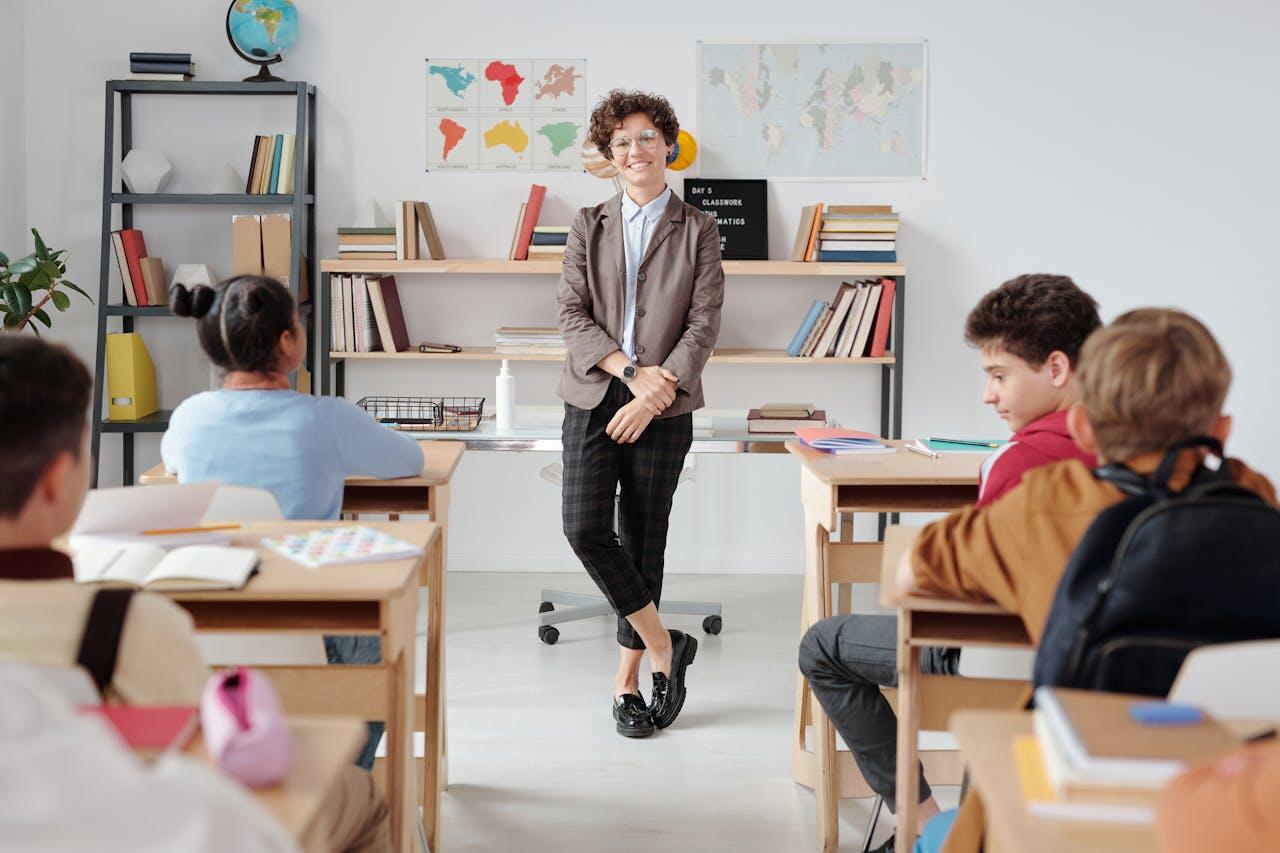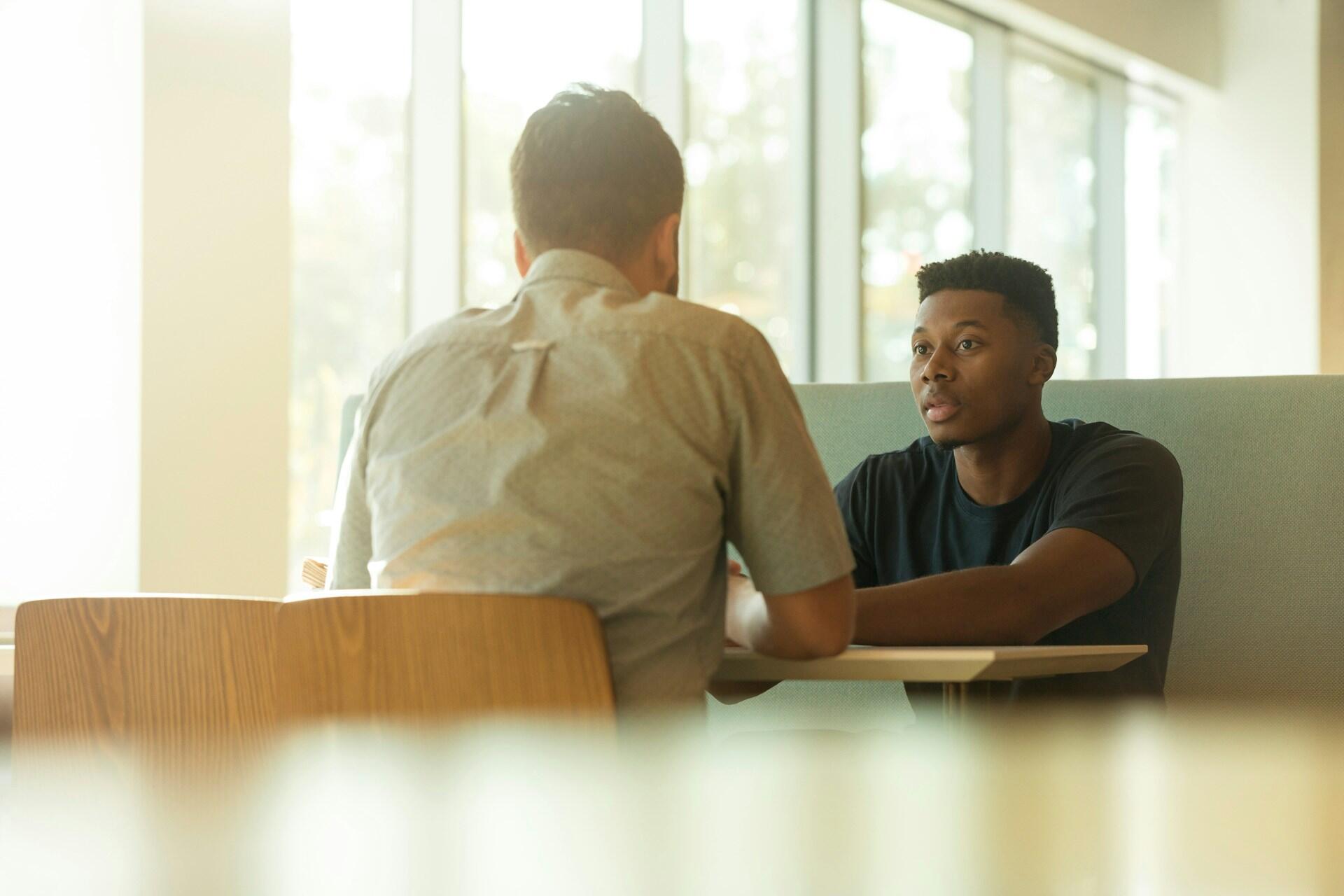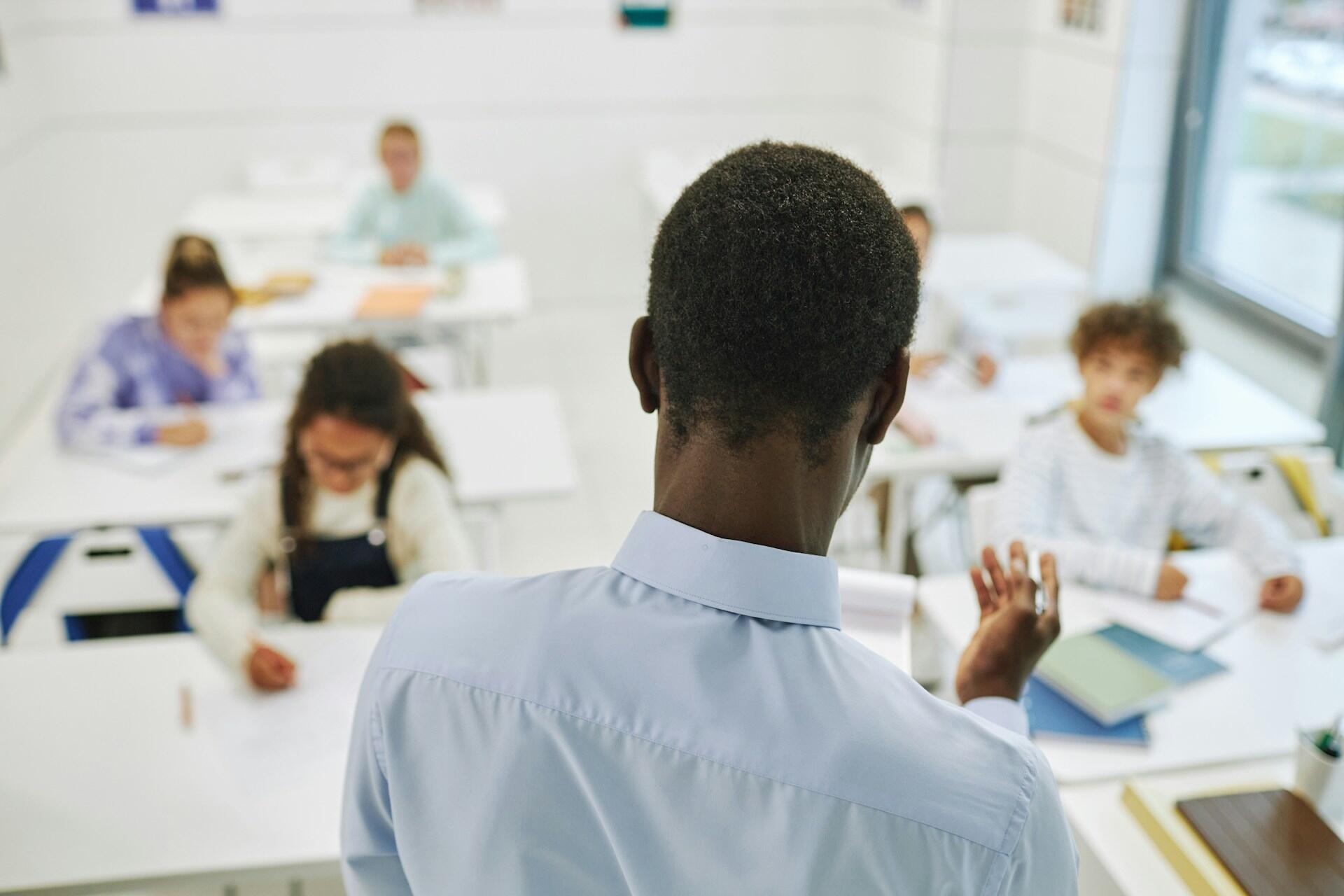The most successful classes are those where the teacher has a clear idea of what is expected from the students and the students know what the teacher expects from them.
Harry Wong, Educator
The role of a teacher is dynamic and significant regardless of the teaching level. Whether you're teaching in reception, primary or at the college level, your job to educate goes beyond teaching theories and facts, but also to encourage positive behaviour and character of your students.
In this article, we'll explore how important effective classroom management ideas are and review the best ways to implement them when misbehaviours or disruptions happen during lessons.
Overview of Positive Classroom Management
- Purpose of positive behaviour management
- Examples of misbehaviours that you'll encounter in the classroom
- Effective positive behaviour management strategies
- Specific steps to respond respectfully through positive classroom management

🌟 What is Positive Behaviour Management?
Almost every educator would agree that a conducive classroom environment would lead to the best teaching and learning experience. However, student behaviour is often unpredictable, and sometimes disruptions and distractions do take place, whether major or minor ones.
This is where positive behaviour management comes in, where educators can apply effective approaches to guide students in a structured and relational manner for a long-term difference. The end goal is to help students have good discipline and conduct voluntarily, especially in these key areas:
Building
mutual
respect
in classrooms
- Cultivate good social skills between peers and between students and educators
Explanation of behaviour boundaries in classrooms
- Brief students on expectations and behaviour boundaries (dos and don'ts) before the lesson begins
Minimising disruptions to classroom learning
- Adopt preventive strategies to keep the classroom dynamic under control
In other words, positive behaviour management exists to meet the primary needs of students and educators. There are social needs and emotional needs where everyone (including teachers) feels respected and appreciated as they interact in the classroom. For instance, no bad mouthing and bullying will be tolerated.
And above all, positive behaviour management helps to meet the academic needs of everyone in the classroom, where the modern teaching and learning process has to take place smoothly.

In alignment with your own school's discipline policies and procedures, students should be made aware of what actions are acceptable and what is not on the very first day of school.
🚫 Common Behaviour Challenges In The Classroom
After reviewing the significance of positive behaviour management, let's look at some of the most common behaviour challenges that you may encounter in the classroom.
Not raising their hands to speak, interrupting others amidst discussion, chattering by themselves when the lesson is ongoing
Shows no desire to participate or not putting in effort towards a given task (individual and group)
Sudden anger, tears, or fear due to anxiety, which could lead to acts like throwing things or shouting
This can be insulting, taunting, or mocking through physical aggression, harassment, or coarse language.
Bringing and using banned substances. For instance, a high school student brought an electronic vape to school, knowing that it's not allowed.
Important note: Different types of behavioural challenges at different school levels would require different types of management strategies or interventions.
For instance, you'll have different ways to address a primary school student who always shows his or her temper when they cannot complete a given task, as compared to a high school student who brought an electronic vape to school.
🎯 Top Classroom Behaviour Strategies That Work
As educators, you must remember that positive behaviour management is a tool to educate students on what is right and allowed without dismissing their misbehaviour. When pointing out their mistakes or misbehaviours, the goal is not to make them feel awful and guilty, but to make them reflect and grow so that they will not repeat the same behaviour.
Remember, your classroom behaviour strategies can only work effectively if you can earn the respect of your students.
✅ Strategy 1: Remain assertive and consistent when disruptions happen
Engaging in unnecessary arguments with your students may disrupt the flow of your lessons and even cause them to rebel further.
When facing similar disruptions from different students, be consistent in setting rules 1 and stating the same instructions calmly without shouting, and give them time to respond.
Example: Everyone needs to finish reading at least 3 pages by themselves before changing seats for group discussions.
✅ Strategy 2: Build relationships and social skills
One way to build rapport and trust with your students is to demonstrate that you genuinely care for them and understand their interests and strengths. That way, they will feel a sense of security and belonging throughout the lessons.

Greet them by name and facilitate a two-way communication respectfully, regardless of whether you want them to be involved in a task.
Example: Adam/ Susan, since you are good at drawing, can you come out and draw a cube on the backboard?
✅ Strategy 3: Apply positive reinforcement and restorative practices
This is perhaps the most important strategy to foster long-term growth and changes in students. When noticing good behaviours in students, be specific and sincere. On the other hand, when there's a disruption or mistake, allow students to reflect, take responsibility for their actions and make amends.
- Positive reinforcement: I noticed that you quietly tidied the bulletin board this morning. Thank you. (Verbal praise)
- Restorative practice: I noticed some tension between you and Susan yesterday. She said she’d like to talk things through. Would you be open to that?
Explore tutor job Melbourne opportunities here on Superprof.

✋How to Create a Positive Classroom Environment
Like Rome, a positive classroom environment is not built in a day. As you plan your lessons to help students concentrate better through a conducive teaching and learning environment, remember that the effectiveness of the strategies mentioned earlier depends on these two key factors:
Clear Structures
- Learning expectations and goals for students should be specific
- Display the timetable in a public space to instil a sense of routine and clarity
- Example: Every student needs to finish a 100-word summary by 10 before going to recess
Good Support Systems
- Students should feel safe to talk to you if they face any challenges, and always allow dialogues
- Fellow teachers should also receive guidance on the parameters of behaviour management based on school policies
- Example: One-to-one meeting with a student to help them share freely
Important note: Positive classroom management can only be effective when you do not abuse your position of authority as an educator, as it can sometimes be too easy to make a statement about the severity of your discipline or management. There should also be a different positive behaviour management approach for students with special education needs
📌You can intervene with strategies for students who are not doing the work with a gentle reminder, but disciplining students for failing can be counterproductive. The emphasis is to instil a good character and not be fixated on exam grades alone.
📌As a teacher, you need to be neutral and calm when deciding on the strategies and not let any biases get in the way. Again, this will all come with experience.
Discover tutoring jobs Brisbane here on Superprof.
🤔 When and How to Escalate Behaviour Interventions
Sometimes, there are serious issues that require educators and even the school to take disciplinary action to work together for an effective and favourable outcome. Positive behaviour management can still be applied in a structured and timely manner to help the student while being intentional and respectful, as shown in the following steps:
Step 1
After observing a misbehaviour, give a calm response/action
Step 2
Meet with the student in private, with relevant check-in questions
Step 3
Engage in restorative dialogues, listen to what the student has to share
Step 4
Offer support and inform the right parties (counsellors or guardians)
Step 5
Share and facilitate educational and prevention responses or tools
Step 6
Follow up with the student for long-term support plans
Don’t forget that humiliating and demeaning punishments should be fully avoided and that corporal punishment is illegal. It's worth noting that a student's behaviour in the classroom might be due to an underlying problem that you aren't aware of 2. If you have concerns that any of the students in your class are experiencing issues at school or home, make sure you speak to the appropriate authorities.

🎉 Master Positive Behaviour Management Skills With Superprof
If you'd like help with teaching, you could always look for private tutors. On Superprof, there are tutors for a large variety of subjects as well as those who specialise in teaching or pedagogy. If you're just starting as a new teacher and would like some tips on behaviour management or even what attire guidelines are for different educational institutions, you'll be in good hands.
Having said that, there are different types of tutoring available, so you must consider the pros and cons of each before you decide which would work best for you and what you want to learn.
Face-to-face tutoring is excellent if you have specific things you want to learn and work on, as the tutor can tailor every lesson to you.
These tutors tend to charge more than others as they spend extra time outside of the lessons planning and adapting their resources to the student. However, this also makes them the most cost-effective type of tutoring because every minute of the lesson is spent working with you.

Find more online tutoring jobs here on Superprof.
Group tutorials are great for those on a budget, as the cost of the tutor's time is shared amongst several students. This does mean that you won't be able to get lessons that are tailored specifically to you, but if you're looking to brush up on your subject, for example, this type of learning approach could be very useful and affordable.
If you can't find any suitable or available tutors in your local area, you can always broaden your search to include private online tutors from all over the country and around the world. As long as you have a webcam and a decent internet connection, there's no limit to how far away your tutors can be.
Don't forget that a lot of tutors on the Superprof website offer the first lesson for free. Once you've found a few tutors that you think could be suitable, get in touch with them to arrange a free lesson. You can try out several tutors before deciding upon the one that's right for you and how you like to learn.
We hope you've found this article insightful. Remember, when you have positive classroom management and a strong rapport with your students, you'll build a conducive and effective learning experience!
References
- Positive Classroom Management Strategies – Victoria State Government | Department of Education. https://www.schools.vic.gov.au/pcms
- Challenging behaviour influences and triggers – Victoria State Government | Department of Education. https://www.education.vic.gov.au/pal/behaviour-students/guidance/challenging-behaviour-influences-and-triggers











